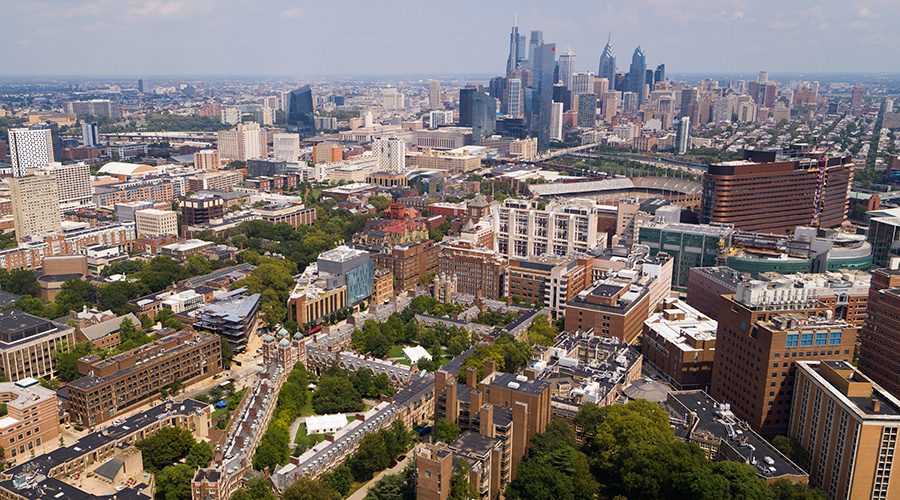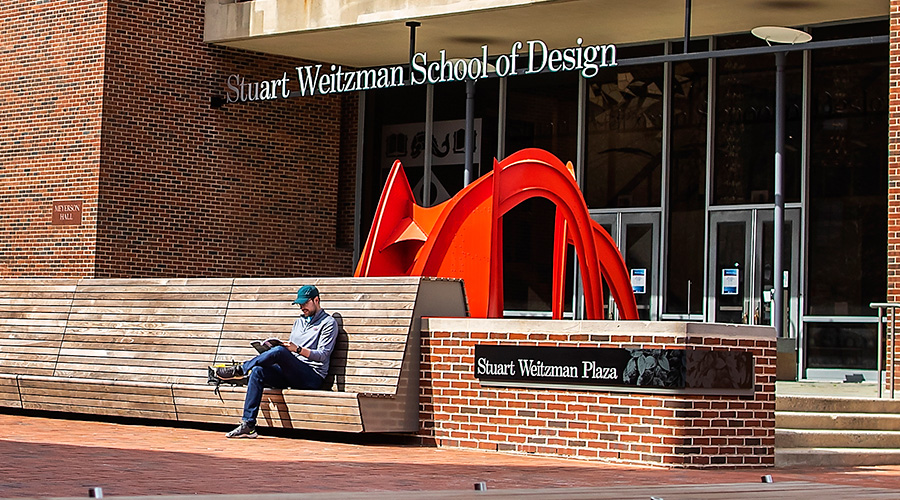A new robotics lab positions PennDesign to lead in creating next-gen materials and environments.
The built environment is the next great frontier in robotics. Imagine being able to aerially 3D print a bridge in a remote location, or design a building that can reconfigure itself based on the evolving needs of its inhabitants. PennDesign is bringing such leaps closer to reality with its new commitment to robotics-driven education and research programs. With philanthropic support, a new Advanced Research and Innovation Lab (ARI) promises to extend the School’s capacity to launch the next generation of design leaders and secure research funding aligned with industry and government investment in building technology and robotic manufacturing.
“Autonomous robotics systems can help with both design generation and execution,” says Robert Stuart-Smith, Assistant Professor of Architecture and Director of ARI’s Autonomous Manufacturing Lab. “Robotics can accelerate generative computation and transform material processes, and we want our students to be at the forefront of the environmental, social and economic impact of these new possibilities.”
Integrating robotics into the architecture program not only promises to help solve 21st-century problems by reducing the environmental impact of construction, it also fuels creative expression. Greater access to robotic technology encourages students to challenge conceptual and physical boundaries by moving beyond the now-commonplace use of robots for model-making and fabrication. Robots give students the capacity to test conceptual designs in the real world, to translate ideas from the virtual to the physical. Already, students have used robots to create aerial tensile structures and print variable parts on demand to create novel buildings.
PennDesign is one of only a handful of schools around the world poised to offer degree programs focused on robotic technology. A new Master of Science in Design (MSD) with a concentration in Robotics and Autonomous Systems will build students’ skills in robotic manufacturing, artificial intelligence and vision technologies, and will develop new ways for designers to harness the latest advances in production. Design studios will collaborate to develop robotically manufactured architectural prototypes at full scale. To facilitate the integration of robotics across the curriculum and support the new degree program, The Power of PennDesign Campaign will support the transformation of a series of mechanical rooms on the ground floor of Meyerson Hall into a state-of- the-art Robotics Lab. “We need a different kind of environment to support this work,” says Stuart-Smith. “Students are not working in traditional studios or sitting at banks of computers. Instead, they are programming and flying drones or working with robotic arms at a substantial scale. They are pushing the limits of architecture.”






